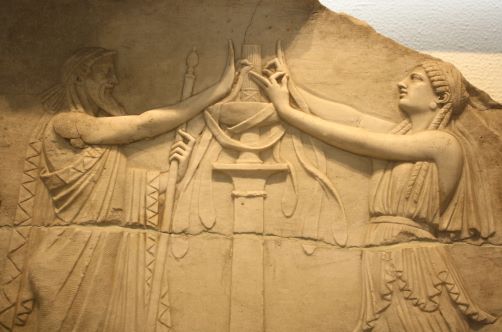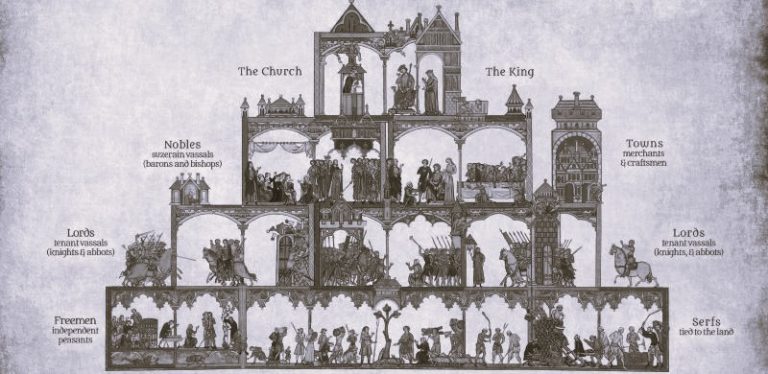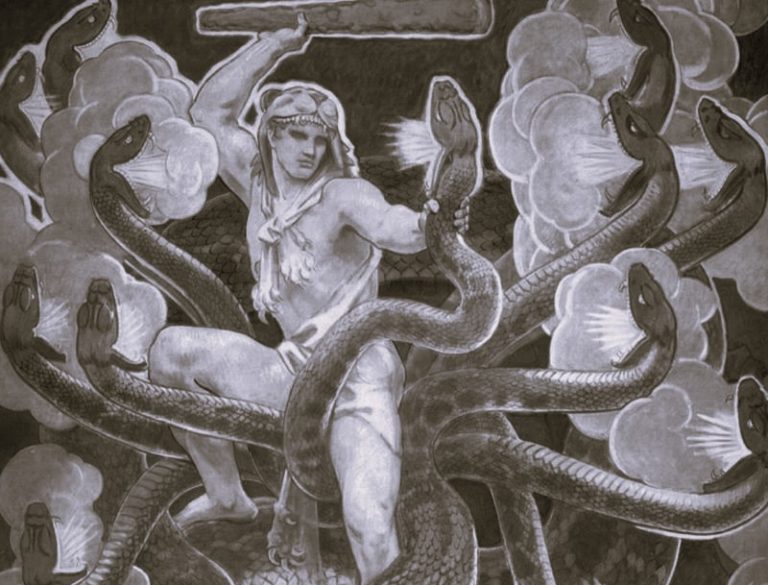

Ancient Greek history blurs the line between fiction and what Dubois would call the “scientific” account of past events with clear and concrete evidence.

By Dr. Attila Hallsby
Assistant Professor of Communications
University of Minnesota
Introduction
This essay addresses propagandistic persuasion and ideas related to civic virtue. The first section covers deception, a distant Greek relative to the concept of propaganda, as well as how Greek history has been used as a destructive form of propaganda in American history. The second section addresses how rhetoric was thought to be opposed to common well-being (or civic virtue) as well as how certain ideas related to civic virtue became a part of early theories of rhetoric.
The Propaganda of History
Overview
The phrase “The Propaganda of History” is the title of a chapter of W.E.B Dubois’s Black Reconstruction in America. As Dubois explains, it is important to recount history truthfully and as fully as possible. This is because history, told untruthfully, may be put in service of dangerous beliefs, naïve idealism, and the idea that our history is continuous with only positive developments. These, Dubois says, are pitfalls of telling history “unscientifically” or inaccurately.
If history is going to be scientific, if the record of human action is going to be set down with that accuracy and faithfulness of detail which will allow its use as a measuring rod and guidepost for the future of nations, there must be set some standards of ethics in research and interpretation. If, on the other hand, we are going to use history for our pleasure and amusement, for inflating our national ego, and giving us a false but pleasurable sense of accomplishment, then we must give up the idea of history either as a science or as an art using the results of science, and admit frankly that we are using a version of historic fact in order to influence and educate the new generation along the way we wish. It is propaganda like this that has led men in the past to insist that history is ‘lies agreed upon’; and to point out the danger in such misinformation. It is indeed extremely doubtful if any permanent benefit comes to the world through such action. Nations reel and stagger on their way; they make hideous mistakes; they commit frightful wrongs; they do great and beautiful things. And shall we not best guide humanity by telling the truth about all this, so far as the truth is ascertainable?[1]
Ancient Greek Storytelling as “Deception”
One aspect of Ancient Greek history, especially as told by the Ancient Greeks, is that it blurs the line between fiction and what Dubois would call the “scientific” account of past events, which renders the with past clear and concrete evidence. With the grand, epic poems, such as those commemorating the Trojan War, details might change from speaker to speaker while retaining the pivotal moments: Helen, the horse, Achilles.
As Simon Critchley, author of Tragedy, the Greeks, and Us, explains, the knowledge that such stories communicated was more critical than a faithful retelling. That’s why Critchley says that tragedy is an invention and an institution; it served a function then that we cannot relate to today insofar as it was a way to create shared stories and community. That’s also why he says it’s anachronistic and self-consciously fictional; it is out-of-sequence, and the details never seem to stay the same. Especially consistent in Greek tellings of history and poetry were tragic knowledge and the ruse of deception. According to Gorgias, author of Helen’s Encomium, tragedy creates “a deception in which the deceiver is more honest than the non-deceiver, and the deceived is wiser than the non-deceived.” Today, we would consider that position categorically immoral, in part because it is possible to have a truthful rendering of history. Often, the tragedy of history surpasses the tragedy of fictional events. But, among the Greeks, history was self-evidently a fiction or propaganda: an engaging story designed to teach a lesson.
When I say that the Ancient Greeks thought of history as tragedy and a story that teaches a lesson, it also tells us something about the play Oedipus Rex, which Critchley also describes and is sometimes synonymous with “Greek tragedy.”
The point of Oedipus Rex is that the audience is always “in” on the information that fate will reveal to the main character, namely Oedipus’s family of origin. In effect, when Oedipus learns his last name he also discovers the crimes he has committed against his own family. When Critchley describes how Oedipus “doesn’t hear what is said to him and doesn’t see what is in front of his eyes,” it is because the audience is there, hearing and seeing him ignore a lesson that is very obvious to everyone else who is watching the play.
The point of tragedy is the lesson: to witness how a person may go through life with the truth in front of them, unable to see it. For the audience, the point is to learn how to rid ourselves of Oedipus’s kind of stunted perception. By allowing ourselves to be “deceived” – suspending disbelief or pretending as if the fictional actions on stage were real – tragedy allows us to learn something about ourselves. By watching tragic knowledge dawn on a fictional someone else, the audience becomes more able to anticipate moments when tragic knowledge dawns upon them, to change how they act, and to handle such moments with greater courage.
Ultimately, that is what Critchley and Gorgias mean when they celebrate rhetoric as “a deception in which the deceiver is more honest than the non-deceiver, and the deceived is wiser than the non-deceived.” By watching the fictional story unfold, the audience may learn something by pretending that the represented events really happened.
Classical Greece as Propaganda about Democracy
I want to turn to two examples of how Ancient Greek history can be – and has been – used more literally as propaganda in the contemporary sense. A first example is classical iconography and architecture supporting a white telling of history and racist institutions. As Carl J. Richard explains:
“when the history and imagery of ancient Athens finally achieved popularity in the United States, that popularity, at least in the South, was based partly on its social inequalities.”[2]
In other words, in the United States, classical Greece has offered a popular myth that supported American racism. Comparing the United States to ancient Greece showed how deep social inequalities had always coexisted with democracy; not because the Greeks had finally overcome these problems. Affluent white Americans, seeking to emulate the Greeks, identified fully with this vision of the past and present.
For example, when Greek history, culture, and architecture became a mainstay in the pre-Reconstruction American South, “most abolitionists responded by arguing that slavery had been the greatest flaw of Athens and the other classical republics.” There is, in fact, a direct connection between how “the advocates of slavery viewed Athens as an ideal society” and the present-day glorification of warlike Greek city-states like Sparta. Sarah E. Bond writes that ancient Greek culture has, even in recent years, been a source of deeply coded and racist beliefs about, for instance, eugenics and immigration policy:
Not all modern depictions are accurate illustrations of Sparta, however. While the movie 300 focuses on the fight for Greek liberty in the conflict with Persia in the early 5th century BCE, it also neglects to tell the audience that Sparta also took liberty from others. Sparta was a slave society dependent on unfree workers, called helots, who were tied to the land to work the fields. They were not chattel slaves (i.e. they were not the property of the Spartans), but were still unable to leave or to participate as citizens. The use and abuse of helots is what allowed Spartan citizens the time to train — at least until 371 BCE, when Sparta was defeated by Thebes at the Battle of Leuktra.[3]

Bond highlights the film 300 as an especially problematic source of beliefs regarding the glorification of Greeks’ warlike culture. Like the adoption of Greek iconography in the pre-Reconstruction American South, the infatuation with Sparta may transmit a desire for violence. As Bond argues, adopting an image of oneself or the nation as the defensive and warlike “Spartan” may reflect a greater national obsession with racist or xenophobic violence.
Platonic Propaganda: The Allegory of the Cave
A final way that Ancient Greece intersects with familiar ideas related to “propaganda” is Plato’s famous “Allegory of the Cave,” presented in Book VII of the Republic. Although he does not speak explicitly about rhetoric or the sophists in this passage, he does say that the people trapped in the cave are “no different from us.” Although “us” is addressed to himself and his companion, Glaucon, it is reason enough to reflect on how or whether the Allegory remains a relevant story today.
Imagine people living in a cavernous cell down under the ground; at the far end of the cave, a long way of, there’s an entrance open to the outside world. They’ve been there since childhood, with their legs and necks tied up in a way which keeps them in one place and allows them to look only straight ahead, but not to turn their heads. There’s firelight burning a long way further up the cave behind them, and up the slope between the fire and the prisoners there’s a road, beside which you should imagine a low wall has been built – like the partition conjurors place between themselves and their audience and above which they show their tricks.
Imagine also that there are people on the other side of this wall who are carrying all sorts of artefacts. These artefacts, human statuettes, and animal models carved in stone and wood and all kinds of materials stick out over the wall; and as you’d expect, some of the people talk as they carry these objects along, while others are silent.
Plato’s “Allegory of the Cave” explores the nature of knowledge and its proper objects. The world we perceive through the senses, Socrates argues, is illusory and deceptive because it depends on a realm of separately existing Forms organized beneath the Form of Good. Forms are the ideal or highest possible organization of an object. They are not accessible through the senses but only through rigorous philosophical discussion and mathematical reasoning. Measuring, counting, and weighing all bring us closer to the realm of Forms than poetry. All art can only mimic or create inferior representations of the true Forms. Rhetoric especially can only lead further away from the truth into a world of illusion and deception. As a general explanation for how “deception” and “illusion” are still basic functions of rhetoric, how else might we update the allegory of the cave for our present moment?
The Common and the Good
Overview
If there are valuable ideas drawn from Ancient Greek thinking about rhetoric, one place to look would be the terms “common” and “good.” Although we would be hard-pressed to translate the terms topos, or ‘commonplace,’ and eudaimonia, or ‘flourishing’ as “common good,” each of these roots teaches us something about the art of speaking well and the kinds of goals that this art may have.
Topos refers to a “commonplace,” a site or location, most often invoked in speech, that is cited to be recognizable to a large audience. “Helen of Troy” would have been commonplace in ancient Athens because audiences would have known who this person was when a speaker would bring them up. Topoi are essential to rhetoric. Without some shared sense of what the speaker and audience are discussing, communication cannot happen. Communication between a speaker and an audience relies on translating experience. The speaker has to tell the audience that they know and understand their experience to be credible or worthy of attention. The audience has to recognize some aspect of their own experience in what the speaker is saying. That site of mutual recognition, the place of commonality, is a topos. The plural of topos is topoi. Topoi allow us to compose writing and imagine speeches because they put us in the frame of mind where we have to consider what is similar between us and our imagined audience.
Eudaimonia refers to “flourishing” and is sometimes translated as “the good life” or “happiness” as a principle of morality. The Greek term “eudaimon” is composed of two parts: “eu” means “well,” and “daimon” means “divinity” or “spirit.” Therefore, to be eudaimon is to live in a way that is well-favored by a god. But Aristotle never calls attention to this etymology in his ethical writings, and it seems to have little influence on his thinking. It means the attainment of one’s highest self and an orientation toward the preservation of life. For Aristotle, Eudaimonia is the greatest end for man collectively and individually.
One task of this class is how to construct, create, and imagine better pro-social rhetorics or better practices of communication that could stand in place of those we are trying to criticize or place in context. That is the function and purpose of drawing attention to the words topos and eudaimonia, which allow us to think about what kinds of commonplaces we must draw upon in our political rhetoric today; and how that rhetoric must be oriented toward human flourishing, in the sense of confronting social problems and charting a better way.
Why was Isocrates “Against the Sophists”?
Let’s turn now to Athenian philosopher Isocrates. A first and frequent question is whether Isocrates is the same person as Socrates. The answer is no. Socrates was Plato’s teacher and is featured as the main character in Plato’s dialogues. Isocrates was a teacher of rhetoric at about the same time that Aristotle was a figure in Athenian life. Isocrates taught speech but did so in a way that he designed to support the Athenian city-state. He is significant because his idea of “the common good” was service to the state and its institutions.

Isocrates was born in Athens in 436 and remained there until his death at the age of 97. His career spans Plato’s lifetime, the great Athenian orators of the late fifth century, and most of the fourth century. When Aristotle opened his school at the Lyceum, he found himself in competition with Isocrates for the best minds of the Athenian youth, and there is evidence that he was acutely aware of that fact. Isocrates’ works “were clearly intended to provide a model of eloquence he held to be so crucial in the conduct of public affairs. More than that, they were the vehicles for his notion of the true “philosophy,” in which wisdom in civic affairs emphasizing moral responsibility and equated with mastery of rhetorical technique.
Like Protagoras and Gorgias, Isocrates believed that human knowledge is limited. In every case, knowing the right course of action is “one of the impossibilities of life” (Against the Sophists 2). He also says, “it is not in the nature of man to attain exact knowledge (episteme) by which, having it, we can discern clearly what we should do or say. … [instead], those who are wise are those who are able by [changing public] opinion (doxa) to hit upon what is, for the most part, the best course of action.” For Isocrates, rhetoric is a means to heal and nourish the collective. Sophistic rhetoric promised social mobility in the polis because it gave individuals the ability to ‘make it’ by speaking well in public.
Isocrates was very familiar with this. Maybe his most famous writing is the Antidosis, a word for a legal procedure that results in an exchange of property. If a citizen accepted the legal challenge of antidosis, the wealth of the loser would be transferred to the winner. Another Athenian, Megacleides, attacked Isocrates’s character by raising some doubt about his teaching. Isocrates then wrote the Antidosis in response. It was his way of saying, “try and see what happens.”
Isocrates also believed that the art of oratory was a finished project — because the sophists had figured that much out. Isocrates’s school had a term of study lasting three to four years. According to Isocrates, technical instruction should be supplemented by the speaker’s own good moral character and involvement in public affairs, as would be fitting for the good citizen who possesses civic virtue (arete). This was a key charge against the sophists: they are irresponsible and bad teachers who swindle their students into knowing a handful of tricks. The sophist, by his account, teaches rhetoric “as simply as they would teach the letters of the alphabet, not having taken the trouble to examine the nature of each kind of knowledge.” In Isocrates’s words: “To obtain a knowledge of the elements out of which we make and compose all discourses is not so very difficult if anyone entrusts himself, not to those who make rash promises, but to those who have some knowledge of these things. But to choose from these elements those which should be employed for each subject, to join them together, to arrange them properly, and also, not to miss what the occasion demands but appropriately to adorn the whole speech with striking thoughts and melodious phrase — these things require much study and are the task of a vigorous and imaginative mind.”
But little by little, as the Athenian empire began to crumble, Athens and its rhetoric were turning toward tyranny. When we get to Isocrates’s historical moment, we should imagine an Athens yearning for days past. It is where education is born and is immediately merged with the interests of the city-state. Isocrates has a kind of politics that wants to push the state back on track and educates the people who will allow that kind of policy to come to life. On the other hand, Plato believes that it will take more than the most influential members of the polis to change the city-state’s government. Until many people see the same sort of Truth, there can be no state. The plans that Plato and Isocrates bring were, therefore, responses to the gloomy circumstances facing Athens. There is some dialogue between the two, but they are both after the same thing: drastic reform.
Aristotle, Pathos, and the Golden Mean
The last thing I want to talk about in this recording is the concept of pathos in Aristotle’s Rhetoric. Aristotle’s concepts of “the good” and “flourishing” usually depend upon striking a balance or harmony between extremes. This is the basis both for Aristotle’s system of virtue ethics and his rhetorical theory of pathos, which appears in his book, the Rhetoric.
Aristotle’s Rhetoric is an important source for many definitions of rhetoric that are still in use today. He defines rhetoric as “the counterpart of dialectic,” or an art that supports the philosophical testing and creation of true knowledge. By his account, rhetoric is both an art of persuasion and a mode of observation. By defining rhetoric as “the faculty of observing/the available means of persuasion/in any given situation,” Aristotle explains that rhetoric deals with changing conditions of public influence and that it deals with common knowledge, with the way a speaker draws upon topoi or commonplaces, to both observe and create compelling speech.
The Rhetoric offers a systematic explanation of what rhetoric is and how a rhetor may use it. For that reason, it reads a bit like a VCR manual, a set of instructions for an ancient machine. In Rhetoric, we encounter the terms logos, pathos, and ethos – in that order. Logos, which describes the speaker’s choice of “words,” their reasoning, argument, and arrangement, is by far the most privileged term in Aristotle’s work. Historically, it has received the greatest share of attention. In this section, Aristotle declares that logical forms of argument, including the syllogism and the enthymeme, have not been nearly considered enough. These “forms” have been important for the study of, for instance, mathematical and symbolic logic, as well as modern forms of debate and argumentation.
The topic of pathos is a bit different. This “chapter” of the rhetoric has separate sections for distinct emotional pairings like anger and mildness. Pathos is usually understood as the “appeal to emotion,” which creates the impression that a speaker is trying to generate a specific feeling in an audience, for instance, to make them sad or make them laugh. But that is not the same thing as pathos. The object of rhetoric is to produce judgment in the hearers. For that purpose, the ‘demonstration’ of logos, or reason, alone is insufficient to produce conviction. The speaker must produce within the judge a particular frame of mind receptive to the judgment. Pathos, therefore, refers to the disposition of hearers concerning judgments that cause them pleasure or pain. “For Aristotle, the principles that govern emotional excitation can be examined completely apart from the contexts in which real orators had produced specific passions.”
Pathos gives the speaker the job of knowing the extremes of their audience’s emotions. Knowing where their audience already is, pathos is the waxing and waning of these emotions, with well-known extremes. For instance, anger and mildness mean that the speaker’s ability to observe may allow them to make an angry audience get angrier. Alternatively, the speaker may seek to cool their hot tempers. Mildness is “the quieting and appeasing of anger.” The admission that one is worthy of punishment tends to defuse anger, since “we punish more severely those who contradict us and deny their offense, but cease to be angry with those who admit that they are justly punished. Aristotle writes, “to deny what is evident is disrespect, and disrespect is slight and contempt.”
This movement between the ‘extremes’ makes pathos resemble Aristotle’s notion of virtue ethics. This concept, sometimes also casually referred to as “the golden mean,” similarly seeks a point of balance between two “extremes” of behavior as the correct or most virtuous course of action.
Ultimately, Aristotle helps us understand steering the emotions requires a unique skill set because speech allows the speaker to move collective emotions. Speeches do not just affect us individually; they can urge a group of people to action. When contemporary scholars of rhetoric Robert Hariman and John Louis Lucaites theorize public emotion, they make similar assumptions. A public, like a person, can experience emotions, but these emotions support that group or collective in ways that are different from individual wellbeing. For the public, emotions may foster participation, identification with leaders or the nation and calls for more-or-less inclusive norms of citizenship. Like Aristotle, however, they set public emotion apart from rationalization, maintaining the traditional separation of logos and pathos.
Introducing Rhetoric in the 20th Century
Between 1914 and 1917, Rhetoric departments were new in the United States. These departments were unique from other disciplines because they studied speech instead of a literary canon, and sought to define themselves apart from English departments. The argument that the early students of rhetoric made in the United States was that the study of speeches deserved to be considered apart from the study of literature. Literature might impart social values, but speeches were a reflection of the values of the speaker. At the very least, speech constituted a very specific kind of literature that required its own independent consideration. Members of the early “Cornell School” of rhetoric included James Wichelns, Alexander Drummond, Harry Kaplan, Evertt Lee Hunt, to name just a few.
Over time, Rhetoric and Speech Communication departments spread across the United States, primarily housed in major public universities. These departments were among the first to study rhetoric as communication. Even today public speaking courses are predominantly housed within Communication Studies departments in public universities around the country. Graduates of the Cornell department carried speech communication to doctoral institutions and small colleges across the country.
One prominent example of the kind of criticism that these early departments performed is Herbert Wichelns’ “The Literary Criticism of Oratory,” an essay that has been widely reprinted and is clearly one of the starting points for the 20th-century rhetorical criticism. This essay argued that classifying oratory and other modes of public persuasive discourse as literature was to completely miss the point. Instead, these speeches reflected the political priorities of the time and reflected a unique kind of invention on the part of the speaker. To analyze these speeches, many early speech communication professors drew upon Aristotle’s Rhetoric, which they argued contained a set of principles by which effective and persuasive speech could take place. Speeches either did or did not conform to Aristotelian principles, and rhetorical criticism consisted in explaining how these persuasive concepts were brought to life by a speaker. This framework of analysis was called neo-Aristotelianism
Scholars like Wichelns also argued that speech and oratory deserved consideration as a unique subject of study. According to Wichelns, oratory was also concerned which own says with permanent values and ideas that endure beyond the historical moment. Even in the present, the endurance of these values is evident because speeches are still intelligible to present-day audiences.
Writing some time after Wichelns was Ernest Wrage. His focus was significantly more on the history of speeches and telling a history of ideas using speech as the primary evidence. According to Wrage, the study of speeches should not be focused on just the techniques of persuasion or dissecting a speech for its basic Aristotelian elements, but telling history with a rhetorical sensibility, drawing upon individual speeches in chronological sequence. Rhetorical criticism is specifically the investigation that uncovers a common public attitude. Wrage is one of the first who organizes American political speeches according to genre, theme, and debates.
Endnotes
- Du Bois, W. E. B., and ProQuest. Black Reconstruction in America: An Essay Toward a History of the Part Which Black Folk Played in the Attempt to Reconstruct Democracy in America, 1860-1880. Du Bois, W. E. B. (William Edward Burghardt), 1868-1963. New York: Oxford University Press, 2007, p. 714.
- Richard, Carl J. The Golden Age of the Classics in America Greece, Rome, and the Antebellum United States. Cambridge, Mass.: Harvard University Press, 2009.
- Bond, Sarah E. “This Is Not Sparta: Why the Modern Romance With Sparta Is a Bad One,” Eidolon Journal May 7, 2018.
Chapter 3 from Reading Rhetorical Theory: Speech, Representation, and Power, by Atilla Hallsby (2022), University of Minnesota Libraries Publishing, published under the terms of a Creative Commons Creative Commons Attribution-NonCommercial 4.0 International license.






